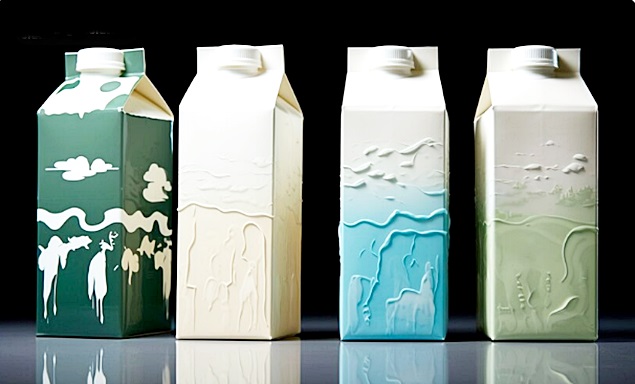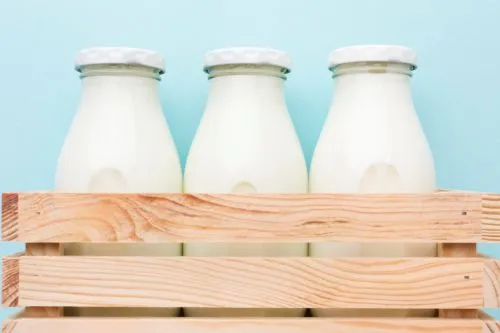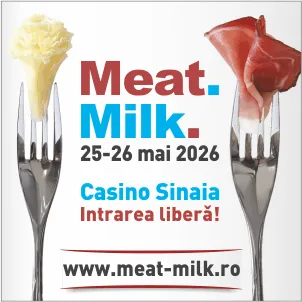
Hybrid Milk Hits Dutch Supermarket Shelves—But Will Consumers Bite?
Hybrid milk—a blend of cow’s milk and plant-based ingredients—has arrived in the Netherlands, thanks to a private-label launch by supermarket chain Albert Heijn, reports DairyReporter. But will shoppers be interested?
A Blended Approach
One of Europe’s largest supermarkets is selling hybrid milk alongside traditional dairy products at the same price point—but will consumers take the plunge? We find out more from PlanetDairy CEO Jakob Skovgaard.
So, what exactly is hybrid dairy? It’s a combination of traditional dairy ingredients—like cow’s milk—and plant-based components, such as fava bean protein. The idea is to offer a more sustainable product without compromising on the taste, nutrition, or functionality consumers expect from dairy.
While hybrid dairy isn’t suitable for vegans or people with dairy allergies, the category targets flexitarians—consumers seeking a healthier and more sustainable option that doesn’t stray too far from familiar tastes. It’s a tacit admission that fully plant-based alternatives still don’t appeal to everyone.
A study by the Good Food Institute in the UK and Germany found that while half of consumers were open to eating more plant-based foods or cutting back on meat and dairy in 2024, they perceived plant-based alternatives as lacking in taste, availability, ease of use, and value for money.
Across Europe, private labels have largely driven sales growth in plant-based dairy—mainly due to their affordability compared to branded products.
The Best of Both Worlds
If hybrid dairy offers “the best of both worlds,” how will it fare as a private-label product? That’s what Dutch supermarket giant Albert Heijn is hoping to find out in the coming months as it launches its first line of hybrid milk under its own brand, in collaboration with Danish food tech company PlanetDairy and private-label dairy producer Farm Dairy.
Marketed as “milk with plant-based ingredients,” the range includes skimmed, semi-skimmed, and whole milk options. Each product contains between 60–70% traditional dairy, with the rest made up of plant-based ingredients—specifically fava bean protein and sunflower oil.
All products in the hybrid line contain comparable levels of B vitamins, B1, and added vitamin D, and feature lower levels of protein and saturated fat than conventional cow’s milk.
While slightly lower in protein and saturated fat than traditional milk (scroll to the end of the article for exact figures), the hybrid range is priced the same as Albert Heijn’s regular own-brand milk, at a recommended retail price of €1.39.
Sold in the Netherlands—a market where plant-based milk alternatives have seen an 8.3% drop in volume and a 7.4% drop in unit sales since 2022 (according to GFI data)—the hybrid milk is positioned right next to classic milk products. Will it fly off the shelves? Possibly—if the messaging is clear.
A New Concept
“Launching a new concept is no easy task,” said Jakob Skovgaard, former strategist at Arla Foods and now CEO of PlanetDairy, the Danish food tech company behind the hybrid milk formulation.
“There are many great examples of hybrid products that have done extremely well—take Lurpak Spreadable, the mix of butter and rapeseed oil. When it first launched, it was hard for the dairy industry to accept the idea.
“But it turned out to be a massive success, and now, no one thinks twice about it. People enjoy the product because it offers a full experience.
“If we present this more as a dairy product and are transparent about the story on the side or back of the packaging—but don’t overly emphasize it on the front—then we have a greater chance of success.
“That’s our strategy: to deliver the full experience while reducing carbon emissions.” Since dairy is a significant contributor to agricultural emissions, lowering the product’s carbon footprint was a key driver for PlanetDairy.
So how does the hybrid range compare to traditional milk?
Measuring Emissions
“Getting to the point where you have a precise lifecycle analysis that allows you to make on-pack carbon reduction claims is complex,” Skovgaard explained. “So Albert Heijn decided not to print a specific CO₂ reduction figure on the label.
“But we’re working with a third-party Swedish company, CarbonCloud, to verify our carbon emissions and benchmark them against equivalent dairy products. For these milk variants, there’s a 20–35% reduction.”
Skovgaard is quick to point out that PlanetDairy isn’t trying to push consumers away from dairy, but rather find a middle ground where taste and sustainability can coexist.
“We love dairy—we just believe the carbon emissions from traditional dairy are too high. Now we have the technology to offer all the benefits.
“It’s about delivering the full dairy experience—without the carbon. That’s our goal.”
Taste Comes First
A lower carbon footprint may get consumers to try it—but taste is key to keeping them coming back.
“Taste is king—you have to get that right before looking at other parameters like nutrition, functionality, and price,” said Skovgaard. “Once you’ve nailed the taste, usually either the functionality suffers or the price is too high, so you have to adjust those without compromising flavor.
“If price wasn’t a factor, the challenge wouldn’t be so great. But we wanted to create a scalable product at a fair price that dairy consumers would enjoy—with a smaller carbon footprint.
“The goal here is full parity with standard fresh milk—in terms of price, taste, and functionality.
“Nutritionally, we’re also very close—we couldn’t match the protein levels exactly without compromising flavor, but our product still has more protein than typical plant-based alternatives.”
As for why the supermarket chose milk as the launchpad for its hybrid dairy line, Skovgaard explained:
“When we first approached Albert Heijn, we presented our cheese, milk, and yogurt. They felt milk would be the best entry point into the hybrid category, and decided to pair it with their hybrid meat products.
“Milk signals value, grabs attention from both the industry and consumers, and is part of a large category.”
Here to Stay?
“The ambition is definitely for this to become a permanent range and a long-term initiative that will grow in scale,” the CEO said.
“We’re also getting more and more calls from retailers across the Benelux and Scandinavia who want to collaborate with us to implement our technology in their markets. They’re talking about hybrid ‘roadmaps’ because they all have CO₂ reduction targets.
“Plant-based alternatives won’t get them there; retailers are now realizing growth has plateaued.”
“So they see hybrid dairy as a tool to reach those goals.”
Skovgaard concluded: “My hope—and our vision—is that in a few years, this won’t be seen as a niche product, but the new normal.” (Photo: Freepik)




